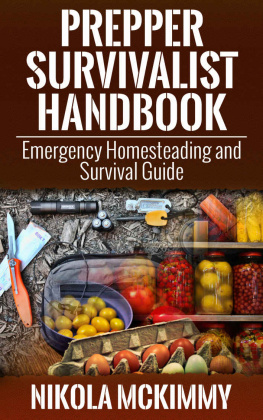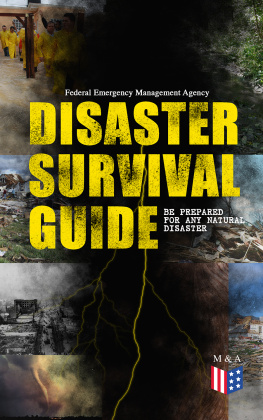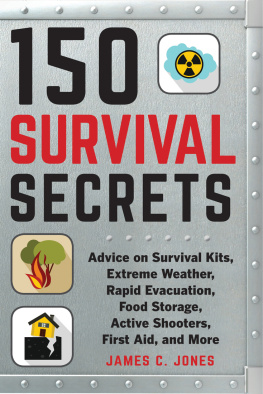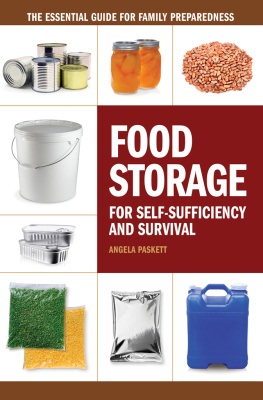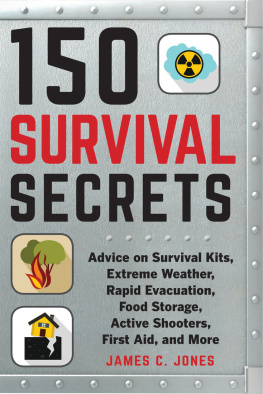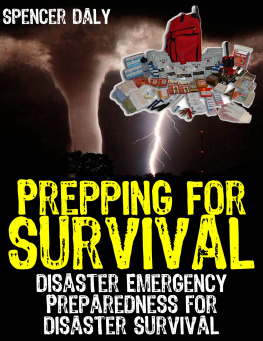Readers shall not transmit or reproduce any part of this book in any form including print, electronic, photocopying, scanning, mechanical, or recording without prior written permission from the author.
While the author has taken utmost efforts to ensure the accuracy of the written content, it is advisable for all readers to follow the information mentioned herein at their own risk. The author is not responsible for any personal or commercial damage caused by misinterpretation of information.
Introduction

If you are thinking about living off the grid , then you have taken an important first step in being prepared when an emergency strikes. Notice, the words when an emergency strikes, because one will surely strike sometime soon. It can be a manmade disaster like biological warfare, nuclear holocaust or overpopulation. Alternatively, it could be a major snowstorm, hurricane or some other natural disaster. Regardless, you need to be prepared to live off the grid.
When preparing, you will need to find the right answers for yourself and your loved ones. For many people, that means giving up living in a big city and moving to a rural setting. For others, it means being prepared to live in the city even when shopping is not available.
Additionally, you will need to consider what you plan to eat . Many people choose to start saving seed in preparation for that day. Others choose to stockpile food. Others choose to raise livestock. Still others choose to can their food.
You will also need to know how to prepare food if you have no electricity. For some, this is as simple as installing a large propane tank on their property. Others, choose to burn wood or other materials to cook and keep warm.
The correct answers to all these questions and more depends on your individual circumstances. It is important to think about the answers and start preparing now. That is why you need this book.
Chapter 1 Where to Live
During the Cold War, United States Congress and their key staff members knew that they could head to the Greenbrier Hotel in White Sulphur Springs, West Virginia, for safe shelter. The underground shelter contained everything needed by these people to continue their own existence and help protect the people of the United States.
Today, those same people can enter a tunnel that leads 140 feet underground. They would then climb on special vehicles that currently will haul them 6.5 miles to the Raven Rock Mountain Complex. This complex has a special ventilation system and is set to protect these government officials with chemical, biological, and radiation filters. The complex, deep underground in the middle of a mountain, even has a freshwater reservoir. Yet, the government is not finished. They are still digging the tunnel even deeper, and the new tunnel will be longer and steeper than the current one.
If the United States government is spending so much money preparing for a disaster , then you should be too. Unfortunately, depending on the government may not be an option, as they have already failed at the task. For example, as Hurricane Sandy battered Staten Island the Federal Emergency Management Association chose to close all of their locations. The New York National Guard followed quickly. Therefore, residents were left to fend for themselves.
Shelter In Place
The first line of defense should be a place to shelter in place in case of chemical, radiological or biological contaminants. Before you need to shelter in place, choose a room that is above ground level and has very few openings. Take plastic that is at least 4 millimeters thick and cut to fit each opening. Label each opening for the hole it is designed to fit. Equip the area with a landline phone and have a battery operated or hand cranked radio in the room. When it is necessary to shelter in place, then attach the plastic to the openings. Turn off all fans along with heating and air conditioning systems. You should be prepared to do this at home, school and work. Use the radio to learn what is going on and what government leaders think you should do.
Panic Rooms
This plan is the bare necessity, and many people choose to do much more to protect themselves and their loved ones. For example, some people choose to build a panic room in their homes. These rooms contain extremely thick concrete walls and only one door. That door is a solid core wooden or steel door that opens outward and hangs from a steel door trim. Many people install a keyless deadbolt on these rooms. The air that is in the room is carefully controlled. The room should contain lighting that is off the grid. Often these rooms are hidden. If you are planning on building a panic room for possible long term living, then it needs to have a minimum of 20 square feet per person. You also need to think about storing food in the room. Many people even store or hide personal protective equipment in their rooms.
Other people choose to build a separate panic room that is not in the main building. When constructing these rooms, make sure that you can easily access it from the main house. Perhaps, through an underground tunnel.
Underground Shelters
If you are going to build an underground shelter, then a practical way to do it is to use a shipping container that is in great condition. Dig a hole in the ground that is 24 inches deeper than the shipping container. Pour concrete at the bottom of the hole and build concrete walls to reinforce the outside. Now, coat the outside of the shipping container with stucco so that it is watertight. Insert the shipping container into the hole and reinforce the top with more dirt and concrete. Make sure to install air ventilation and lighting.
Remote Locations
Other people choose to buy land in a remote area. If you are not ready to live on this land full-time, then consider how you will get to the location if an emergency occurs.
Finally, some people choose to leave urban areas altogether and head to remote locations often referred to as bug-out locations. When choosing a bug-out location, your first consideration should be finding a location that offers water. Then, look for a location where you can grow a crop and livestock. Consider a location where there is abundant firewood, and with natural resources including wild animals. Finally, consider the weather and how it will affect your ability to live in the bug-out location long-term.
Chapter 2: What to Eat

Stop and imagine a world where there are no grocery stores to run to when you run out of food . In fact, imagine a world where money has no value because there is nothing available to buy. Now, imagine if you were in that situation for days, weeks, or maybe even months. If this thought scares you, then you need to learn to prepare your own food.
In fact, that scenario is what many governments around the world are trying to prepare for today. For example, the Alaska state government is currently stockpiling enough food to feed 40,000 people for a week in warehouses near their military bases. Numerous reports indicate that the United States government is stockpiling food and has been since 2008. If you are wise, and we know that you are, then you may want to start stockpiling food too.

